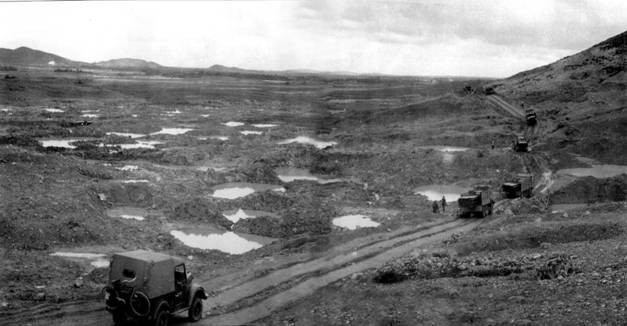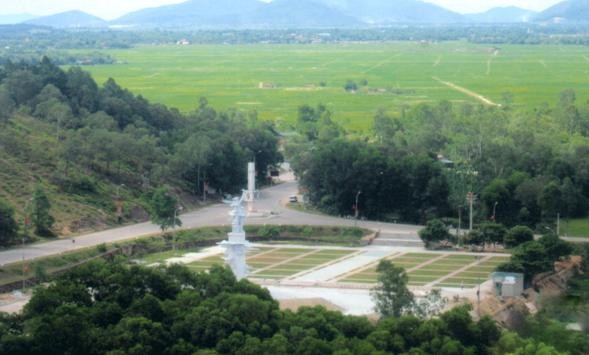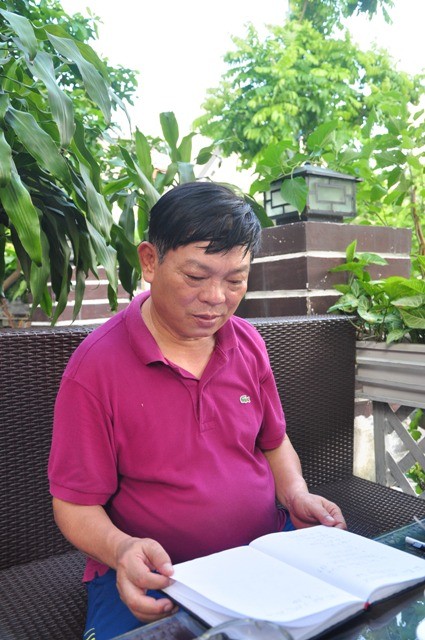(VOVworld) - 50 years ago on August 5, 1964 the US imperialists launched an operation called "Pierce Arrow" aiming to destroy major transport routes in northern Vietnam. Ham Rong bridge, Ghep ferry wharf in Thanh Hoa, Ben Thuy ferry wharf in Nghe An, Hon Gai and Gianh port in Quang Binh province were all the targets of the operation. In face of the situation, a new road was built to provide reinforcements and supplies to the south. Connecting the northern province of Ninh Binh to the central Quang Binh, Route 15 with the National Highway A1 was the two main lines of military transportation of soldiers, ammunition and food supplies to the south.
 |
This famous road was part of the legendary Ho Chi Minh Trail. According to Major General Luong Sy Nhung, a former commander of the Army Corps 12- known as Truong Son Army Corps, the road which was completely devastated by American bombing during the war, has now come back to life after 50 years to become a major transport route in central Vietnam. Mr. Nhung recalls: "The US began bombing northern Vietnam on August 5, 1964 to prevent the transportation of supplies to the south. Bridges were their first targets. At that time, Route 15 was the main military line linking western Ninh Binh province with western Thanh Hoa province, going through Tan Ky, Do Luong, Nam Dan, Linh Cam, Huong Son in Ha Tinh province and crossing the highway 8 to Laos. All our reinforcements and supplies passed through this road to the south."
 |
When the road was discovered by the American army, it was bombed relentlessly. The intersection of Dong Loc in Ha Tinh province was one of the heaviest destroyed because it was the vein of the supply route to the southern front. Major General Luong Sy Nhung said every square meter of the road in Dong Loc intersection received no less than three bombs excluding mines and other weapons. In the peak time, there were 16,000 people gathering in this intersection. Nhung said:“This cross was the sinews of war. From this intersection, the road goes straight to the province of Ha Tinh and joins the national highway A1. If our convoys passed by the national highway, bridges on this road would be destroyed by bombing. We then had to use the route 15 to transport ammunition and food to the south. With mountains on one side and rice fields on the other, Dong Loc was therefore the only road. If it had been destroyed, all supplies would have been blocked. Therefore, the intersection of Dong Loc was one of the most bombed places on the Ho Chi Minh trail during the war. "

Major General Luong Sy Nhung
|
Dong Loc intersection is closely associated with the sacrifices of 10 young voluntary girls. Their sacrifices have become a legend in the anti-US war and throughout the national liberation struggle. On July 24, 1968, during one of the bombings, a team of ten young girls was bombed. These young voluntary girls aged from 17 to 22 years and led by Vo Thi Tan, were responsible for the repair of the road for traffic. The intersection has now become a historical relic site. Tran Dinh Uoc, Head of the Dong Loc Intersection Relic Management Board: "We have paid much attention to training the guides because they are the ones that tell visitors the glorious past of our country and especially our struggle against the US imperialists. The site is also a place where younger generations are educated in history and the Vietnamese nation. July is the peak season of the relic site as it receives about 50,000 visitors during the month”.
Today, the intersection of Dong Loc has regained its greenery. On the hill, surrounded by pine trees, a monument was erected on which the names of the 10 heroines are engraved.